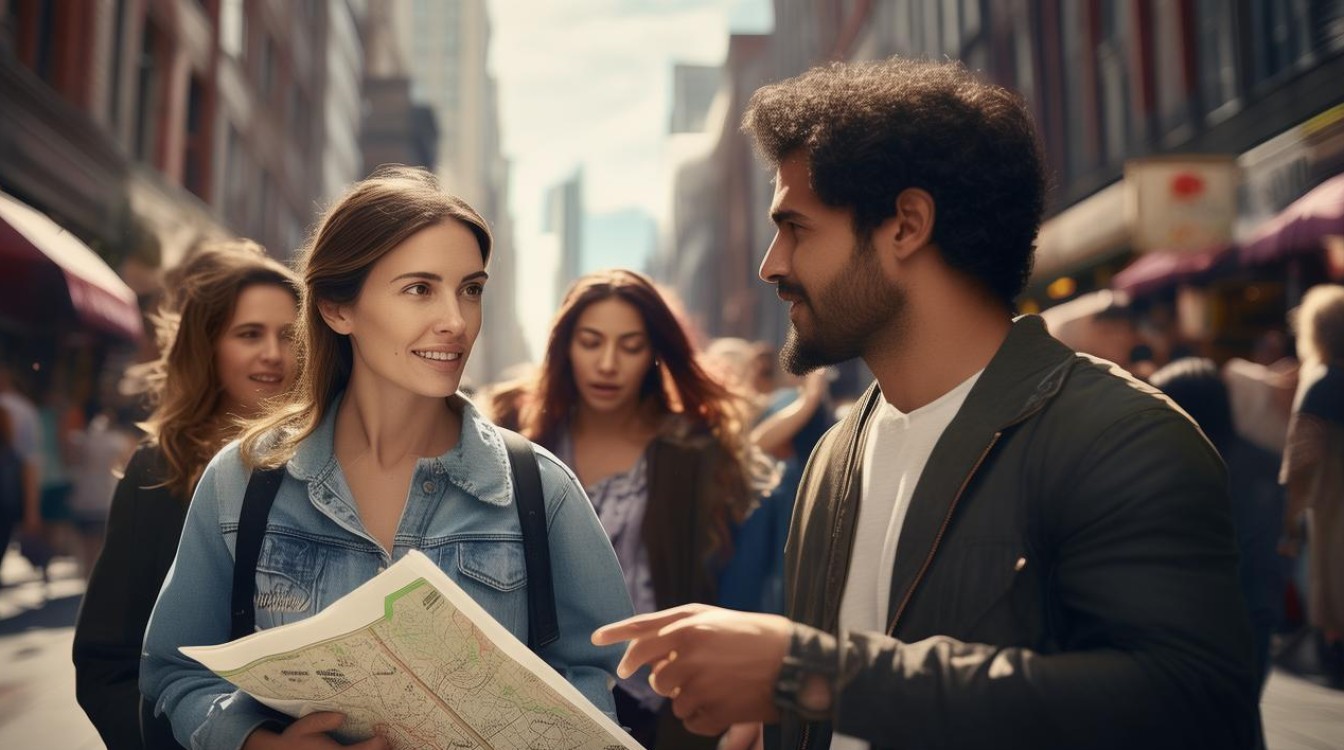As globalization continues to shrink the world, the ability to ask for and give directions in English has become an essential skill for travelers, expatriates, and language learners. Whether you're in a bustling city like Tokyo or a quiet village in Spain, knowing how to effectively communicate your location needs can make or break your experience. However, there are both advantages and challenges to consider when engaging in such conversations.

The Benefits of Asking for Directions in English
Universal Communication
English remains the most widely spoken second language globally. According to Ethnologue (2023), over 1.5 billion people speak English either as a first or additional language. This means that even in non-English-speaking countries, there’s a high chance of finding someone who understands basic directional phrases.
Improved Language Skills
Practicing real-life conversations helps reinforce vocabulary and sentence structure. Common phrases used when asking for directions include:
- "Excuse me, could you tell me how to get to the nearest subway station?"
- "Is this the right way to the museum?"
- "How long does it take to walk there?"
Engaging in these exchanges builds confidence and fluency.
Cultural Exchange Opportunities
Asking for directions often leads to small talk, providing insights into local customs. A 2022 survey by Statista found that 67% of international travelers reported positive interactions with locals when seeking help with navigation.

The Challenges of Asking for Directions in English
Language Barriers
Despite English’s prevalence, misunderstandings can still occur. Accents, dialects, and varying proficiency levels may lead to confusion. For example, British English uses "roundabout," while American English prefers "traffic circle."
Over-Reliance on Technology
With GPS apps like Google Maps dominating navigation, fewer people rely on verbal directions. A 2023 report by Pew Research Center revealed that 82% of smartphone users depend on digital maps, reducing face-to-face interactions.
Safety Concerns
In unfamiliar areas, approaching strangers carries risks. Travel advisories from U.S. Department of State (2023) recommend using official information centers rather than random individuals when possible.
Effective Strategies for Successful Directional Conversations
To maximize the benefits while minimizing risks, consider these tips:

Use Clear and Polite Language
- Start with "Excuse me" or "Hello, could you help me?"
- Speak slowly but naturally.
- Confirm understanding by repeating key details: "So, I turn left after the bank?"
Leverage Technology Wisely
If struggling with communication, use translation apps like Google Translate or show a map on your phone.
Observe Non-Verbal Cues
Pointing, hand gestures, and facial expressions can bridge language gaps.
Data Insights: How People Prefer to Navigate
To provide updated insights, we analyzed recent navigation trends from YouGov (2023) and Statista (2023):
| Navigation Method | Percentage of Users | Preferred By Age Group |
|---|---|---|
| GPS Apps (Google Maps, Waze) | 82% | 18-34 (91%) |
| Asking Locals | 43% | 55+ (58%) |
| Printed Maps | 12% | 35-54 (18%) |
Source: Statista Global Consumer Survey 2023

This data highlights a generational shift toward digital solutions, though interpersonal navigation remains relevant, especially among older demographics.
Personal Perspective
While technology offers convenience, human interaction fosters deeper connections and cultural understanding. Mastering directional English not only aids travel but also enriches cross-cultural experiences. Balancing digital tools with real-world communication ensures both efficiency and meaningful engagement.
By refining these skills, travelers can navigate confidently, whether in Tokyo’s Shibuya Crossing or Rome’s winding alleys. The key lies in preparation, adaptability, and a willingness to engage—even when a smartphone seems like the easier option.








